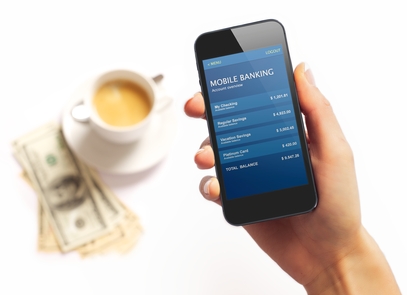
In early spring of 2009, Starbucks launched its mobile card app in a humble sixteen stores. The program spread like wildfire. Nowadays many consumers pay for their coffee using a barcode displayed on their mobile phones, scanned at the point of sale. Astoundingly, this technology has lifted Starbucks’ mobile payment revenue beyond that of many other companies – including tech giants like Apple and Google.
Google Wallet has been around since 2011, though it hasn’t garnered enough consumer response to compete with traditional payment methods (i.e. cash or credit). The app has been downloaded fewer than 10 million times in two years. And while Apple Pay has managed to please consumers with its user interface, many iPhone users have refused to use the product. Only about 9% of iPhone 6 owners downloaded Apple Pay, with less than 5% of eligible transactions. All in all, with the lack of an effective form of mobile payment, the app market has been left with a big void to be filled.
So how has Starbucks risen to the top of the mobile payment heap? The Starbucks mobile payment program has been successful in two major ways: convenience and rewards.
Convenience Pays
Consumers have grown accustomed to using gift cards when shopping at Starbucks because the company has created incentives for people to use them over the last decade. They modeled their mobile payment program after the incentivized gift card campaign; so the switch to mobile payments has been as simple as taking out a phone in lieu of a gift card. Also, because Starbucks’ clientele tend to be tech-savvy, upscale, and in a rush, the convenience of mobile pay has been embraced by customers.
The company also simplified an existing technology to benefit the customer. In the past, consumers have had to scan 2D barcodes with their own mobile cameras, a process that relies on the speed of a cell phone and the owner’s ability to use it. By flipping the process around, the customer presents the barcode to the barista – who is well-trained in the art of scanning – and the device that scans the barcode is not as slow or bulky as a mobile phone might be. The result is a faster, more satisfying customer experience.
Loyalty Begets Loyalty
Again, Starbucks has been in the loyalty business for many years with their gift cards. This gives them a leg up when it comes to rewards: they have the empirical evidence to know what works and what doesn’t. In the first year of their gift card program, they realized that 75% of the cards weren’t being given as gifts at all. They were being used by the original purchaser. With this knowledge, they laid the groundwork for a loyalty program around their gift cards, assigning customer details to the card number and encouraging their guests to “reload their cards” when they were running low.
The loyalty program persists to this day as the My Starbucks Rewards program. It has various tiers of rewards according to how much one has purchased at their stores and online, ranging from Green to Gold members. The perks include secret offers, flash sales, and free coffee on a member’s birthday. It’s no wonder that incorporating their mobile payment into their existing loyalty program worked so swimmingly.
In the end, Starbucks is winning the mobile payment war. Eleven percent of sales at Starbucks is conducted through their mobile wallet program. That adds up to about four million mobile payments a week. And if that doesn’t grab you, try this on for size: 90% of all mobile payments in the United States were made at a Starbucks, and that volume is growing by 50% every year. With that kind of lead in the mobile payment race, they are unlikely to lose their market share anytime soon.
